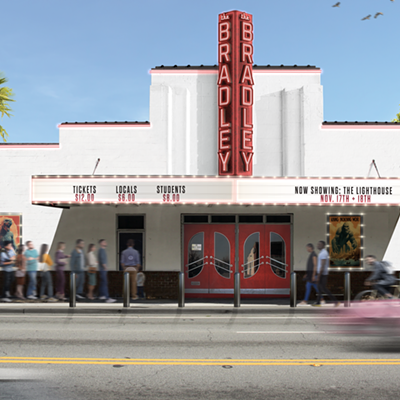When Sergio Aragones first walked into the New York offices of Mad magazine in 1962, carrying his portfolio of cartoons, he was nervous. He hadn't been away from Mexico for very long.
"I had just arrived, and my English was nil," Aragones says. "I went to a lot of magazines showing my cartoons, but the majority of them didn't like cartoons without words. Many of the editors would look at the back of the page, looking for the lines.
"They would look at it and say ‘These things are crazy! You should go to Mad.'"
Just 24, Aragones was a huge fan of the American comic/satire magazine. "My cartoons were gags," he recalls. "I knew that I was going to be rejected because what I did wasn't what Mad did."
He asked to speak with Antonio Prohias, whose "Spy vs. Spy" was one of Mad's current hits. The Cuba-born Prohias' wordless, black and white strip wickedly parodied the ongoing Cold War. Aragones figured the Spanish-speaking Prohias could introduce him around. Break the inevitable ice.
Prohias, Aragones says, was friendly but not a lot of help. "My English is worse that yours," he told the aspiring cartoonist. "You'll have to introduce yourself."
Happily, the editors at Mad were immediately taken with Aragones' simple "gag" cartoons.
"They saw the gags as a continuity," Aragones says. "I had some already-drawn cartoons about astronauts, and they made it a two-page article on the U.S. space effort."
Thus was born the classic recurring feature "A Mad Look At ..."
Along with the work of Mad's legendary "Usual Gang of Idiots" - including Mort Drucker, Al Jaffee, Jack Davis, Dave Berg and Don Martin - Aragones' one-panel cartoons helped define the look and feel of Mad during its heyday. Before National Lampoon or SNL, Mad was the funniest thing going.
Said Monty Python's Terry Gilliam: "Mad became the Bible for me and my whole generation."
"I learned to be a movie critic by reading Mad," Roger Ebert wrote.
Unlike some of the others, Aragones didn't specialize in celebrity, movie and TV show spoofs, or - God forbid - U.S. political satire.
"When you are not from a particular place," he says, "you cannot do political cartoons because immediately, the people that don't agree with you say ‘He's not from here. Why's he doing that?' And in Mexico I couldn't either, because I was born in Spain. I was always like an alien no matter where I was.
"My father was a very political man. He had left Spain because of the fear of the Spanish War. He was a socialist, and one thing he told me as a kid was ‘Be careful when you get into politics, because politics change. And you really have to firmly believe in something to do something, because if not you're going to look ridiculous when you change your point of view.' Which happens when you grow up.
"So I stayed away from politics. My forte, the things I like to do, is about social criticism more than the political agenda."
Indeed, Aragones wrote and illustrated hundreds of installments of "A Mad Look At ..."
He became legendary for his "marginals," tiny, one-panel cartoons placed in the margins of Mad pages. You never knew where they were going to turn up, they had no relevance to whatever was on the main page, and you "got" the quick wordless gag immediately.
During the 1960s and ‘70s, the ever-prolific Aragones - through the Mad blueprint - published a handful of paperback books full of these "drawn-out dramas." The material was all new each time, none of it repeated from the magazine.
"When I sold them the first thing, the astronauts, they made the mistake to say mi casa su casa," Aragones chuckles. "I took it literally, and I was there every day. So the second day, they said ‘Well, write a couple of gags about motorcycles.'
So I went to the hotel I was staying at, and next day I was there with the article. Which surprised them very much, because it usually takes a writer a couple of weeks to come up with an article.
"They said ‘Go home, Sergio, we have enough material here for months.' I wanted more, so that's when I figured the thing about the marginals. When the first issue came out, the cover was my idea, they had my two-page article, and they had the marginals."
Editor Al Feldstein once said of Aragones: "He could have drawn the whole magazine if we'd let him."
Mad began in 1952, and before Aragones' arrival, there were tiny, zany sayings in the margins. "I couldn't understand them," says Aragones. "Partly because time passes, and people don't remember where the quote is from.
"So I told them I could do little silent cartoons that could be anyplace, and everybody could understand it. No matter what nationality or anything."
Like all the other writers and cartoonists, Aragones was never a "staff member." Everyone was paid on a freelance basis, with a personal check from publisher William Gaines.
Not that they didn't hang around the office.
"The mentality of everybody is that Mad was a crazy place," he says. "But crazy places don't work. It was a working office - when you arrive you find secretaries, you find people working at their desks. The only difference from a normal office is that they laugh a lot. They're looking all day at humor. It was a very well-oiled machine, to publish a magazine like Mad."
The editorial meetings, fittingly, weren't tightly structured. "I would bring ideas, and then they would choose. Which is what happened with everybody. They rarely assigned anything; they'd suggest what the theme of the magazine was going to be - things that were popular at the moment.
"But they never said ‘Do this' or ‘Do that.' Everybody - Jaffee or Drucker or Martin - comes with their own ideas and says ‘Here it is.' And then they will choose what they like."
Now 74, Aragones, who also created the Groo the Wanderer comic books, lives in Ojai, California, where he still draws every single day.
It's not what it once was, of course, but Mad is still published for eager fans. And with one exception, Aragones' work - including the marginals - has appeared in every issue since that first one, in January 1963.
So in a way, he's had the last laugh.
"In those times, silent cartoons were not popular," Aragones says, "but they said ‘Well, we'll run them until you run out of ideas,' and of course I'm still doing it."
IT'S A SCAD, MAD, MAD, MAD WEEKEND
What: Sergio Aragones, Al Jaffee, Jack Davis, Paul Coker Jr. and others from Mad magazine are working with SCAD sequential artists Nov. 11-12
Public event: Panel discussion with the artists, writers and editors 5-6:30 Saturday, Nov. 12
Where: Trustees Theater, 216 E. Broughton St.
Admission: Free
Artist's website: sergioaragones.com
































